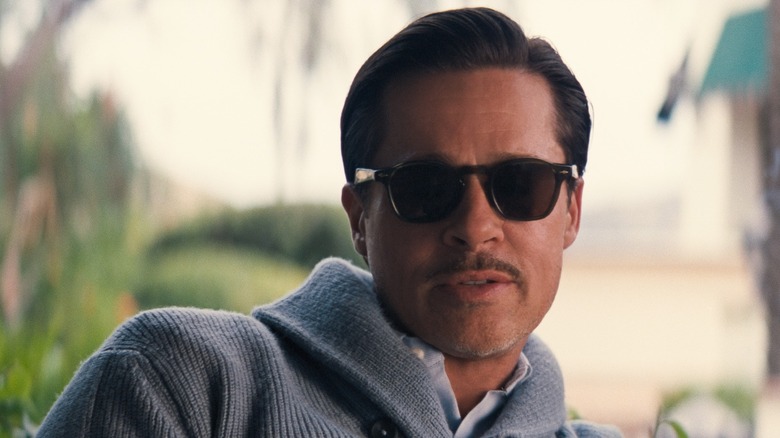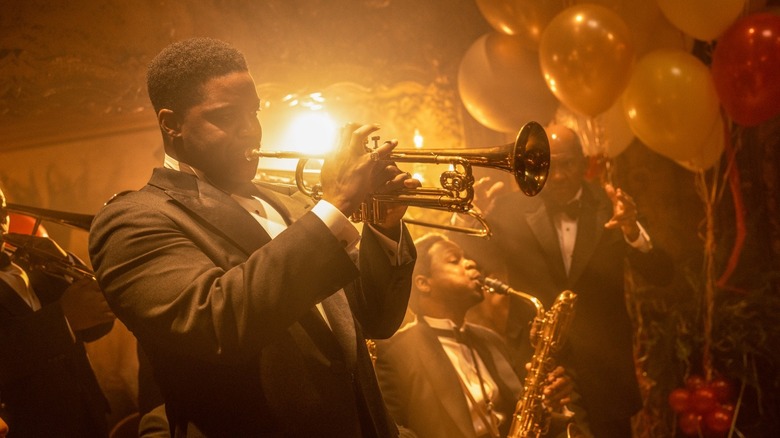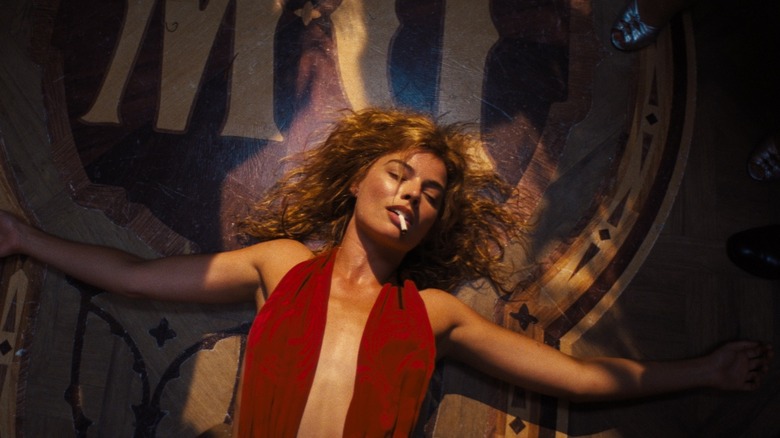Director Damien Chazelle Found The Early Talkies To Be A 'Catastrophic Loss' For Cinema
Judging from its dazzlingly chaotic trailer, Damien Chazelle's "Babylon" is hellbent on capturing early Hollywood in all its debauched, Roaring Twenties glory. The particulars of the plot are being kept under wraps, but it appears to be about the suddenly shifting fortunes of an industry about to plunge headlong into the era of sound motion pictures (aka "talkies"). With a ludicrously talented and attractive ensemble cast that includes Bradd Pitt, Margot Robie, Diego Calva, Olivia Wilde, Jovan Adepo and the should-be-in-everything Samara Weaving, it could be about the manufacturing of curling stones and we'd be there on opening day.
Though the film looks like a boozy blast, the sobering truth is that many great artists struggled with the transition from silents to talkies. Cinema had progressed tremendously as a visual medium. Masters like F.W. Murnau, Fritz Lang and Franz Borzage crafted films that were stylized, expressive and utterly captivating, while comedic performers like Buster Keaton, Charlie Chaplin and Harold Lloyd continued to explore the possibilities of physical comedy. When sound took over, filmmakers were constrained anew by technical limitations. The recording tools weren't yet up to the task, which forced filmmakers and actors to deal with a new, incredibly steep learning curve. It sounds like this painful process might be at the heart of "Babylon."
A visual medium restricted by sound
In an interview with Entertainment Weekly, Chazelle categorizes the advent of sound filmmaking as "a disaster scenario." This became clear to him as he revisited such late silent classics as Murnau's "Sunrise," Carl Theodor Dryer's "The Passion of Joan of Arc," William A. Wellman's "Wings." According to Chazelle:
"Comparing some of the last silent films to some of the first sound films, you see right away just how brutal the shift was — that suddenly the open-air freedom and expansiveness and experimentation of silent film gets sandwiched and cloistered onto very confined soundstages where you can barely move because they hadn't quite figured out yet how to move the camera easily with sound. The early talkies are really hemmed in, and it feels like this total, catastrophic loss."
This isn't an overstatement. There is a rudimentary visual quality to many of the pre-code films of the early '30s. Dialogue was at a premium, which is why many of the country's finest playwrights and wits fled to Hollywood to make a killing. While the aforementioned masters gracefully transitioned, Keaton and Lloyd were creatively straitjacketed. Only Chaplin figured out how to get his visual skills to mesh with the dictates of sound (brilliantly so in "Modern Times").
A baffling decline in quality
Sound didn't ruin movies, but it did diminish the importance of visual storytelling. A stolid, proscenium approach took hold. Movies were staged like plays, often because they were plays to begin with. And yet even the most soundstage-bound films of the early-talkies era tend to be more visually interesting than the over-covered movies and TV shows of today — where, inexplicably, sound quality has been so degraded that people watch their "content" with closed captioning turned on (while the images are buried in low-lit muck).
Even after multiple aesthetic/ideological revolutions like the French New Wave, New Hollywood and the Indie movement of the 1980s, we somehow found a way to make movies look and sound worse than ever. There's no more apt metaphor for the seemingly voluntary decline of, well, everything in this world than the shoddy technical quality of too many films today.


